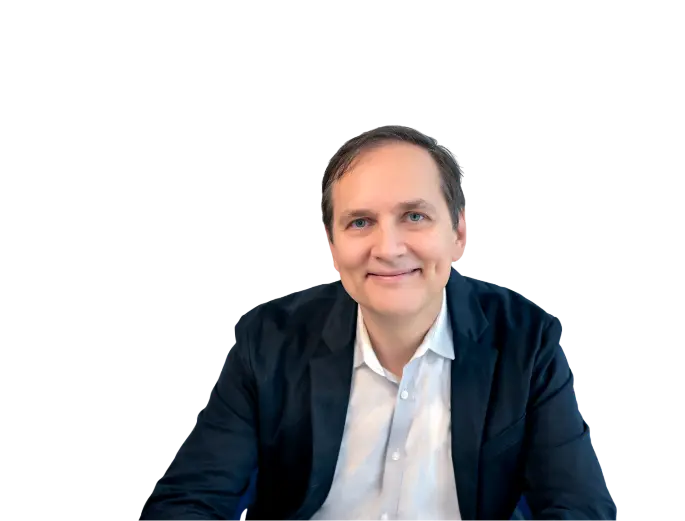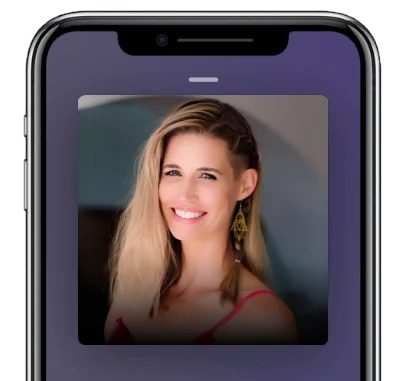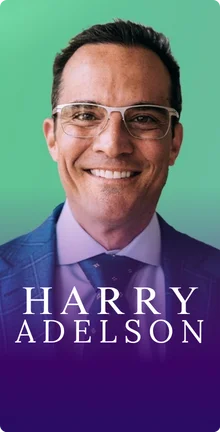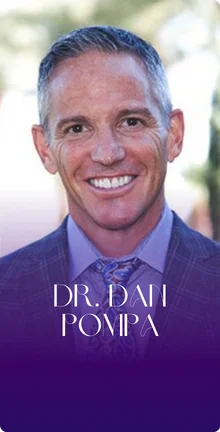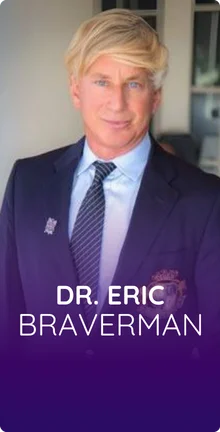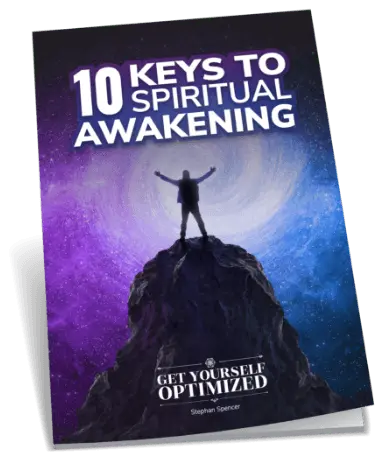Thanks for having me.
Let’s talk about stem cells. The last time we had a stem cells-specific episode was when we had Dr. Harry Adelson on the show, which was a couple of years ago, and actually, that was prior to my procedure. Let’s talk about what exactly a stem cell procedure is. And we can go on some details around how you specifically helped me and my wife, Orion, turn back the clock.
Great. I’ll just dive in. You have stem cells all over your body and in every organ of your body, and they are like the mother cells or the master cells. They’re the cells that are responsible for keeping that particular organ or tissue healthy and in order. So, if you have an injury or you get sick, the stem cells are actually able to replicate and create more of that particular tissue – whether it’s the skin, cartilage, or heart muscle. You have to have stem cells in order to heal properly and in order to stay healthy during your life. We’re using stem cells, generally from the patient’s own body or moving them somewhere else to basically help regenerate tissue in different areas of the body.
Right. So when you get a stem cell procedure, you’re having stem cells harvested and reinjected into you. But then, there are some other things that you can do to also add to the procedure, like getting exosomes and all this other stuff that probably our listeners are unfamiliar with. Do you want to get a little bit about that stuff?
Find what's out there as far as different ways to hack your health and make yourself feel better, live longer, and live healthier. Share on XSure. We take stem cells from your bone marrow or from your fat, for instance, which are the two most common types of stem cells that we’re using. When you take those stem cells and you put them somewhere else, what they do is they actually work by talking to the stem cells that were already in that part of the body, that already lived in the skin, or wherever you’re putting them, and they tell those cells that you already have, that they need to start making more of whatever it is – collagen or hyaluronic acid. Essentially, they need to be more productive. It’s not the transplanted or moved stem cells that are doing all the action. It’s actually the stem cells that are already living in that part of your body. What we found is that you can mimic some of those stem cell activities by using just messaging components from the stem cells.
Exosomes are, I call them little messenger bubbles. They contain the information from the stem cells, but they actually act in the same way and then they communicate with your own stem cells in wherever we’re putting them to bring about regeneration and change. I also use platelet-rich plasma or PRP, which has been around for more than 30 years, which is a component of your blood, the platelets for your blood, and they also have different types of growth factors that can also direct action in your stem cells.
What we’re doing with all of these therapies, whether it’s taking your stem cells for your bone marrow, or using exosomes, or PRP, or any other number of types of stem cell therapies, is we’re basically trying to send messages to your body’s own stem cells in that particular area, telling them, “Hey, it’s time to regenerate, revitalize, and repair this tissue.”
Right. The different kinds of procedures that you have done when you’re trying to revitalize these parts of your body —we’ll talk about what the P-Shot is and the O-Shot in just a minute—you’re not tricking but you’re coaxing your body into regenerating and turning back the clock, in a sense, because if you were to Google for stem cell before and after and switch over to Google images to see the results, you would be amazed that these people look like they’ve had facelifts, but all they had was stem cell therapy to turn back the clock, maybe ten years or maybe some more, looks like?
It’s great. Your skin, for instance. When you hit about age 25, which is pretty young, your skin cells, your fibroblast stop making as much of the main components of skin, like collagen, elastin, hyaluronic acid; each of the parts of skin that give your skin structure, bounce back, hydration, and essentially make you look youthful. At the age of 25, you start making less and less of those. Every single year that goes by after 25, you’re making less and less. You have this downward curve, which is a big reason why we see age in the face.
What we’re doing with all of these types of regenerative therapies, whether it’s stem cells, or PRP, or exosomes, is we are communicating with your own skin’s fibroblasts and saying, “Hey, stop being so lazy. Let’s make some more collagen, elastin, hyaluronic acid.” All the skin components that your skin stopped making but is capable of making. It just needs the signal to know to do that.
When I had my procedure in Dr. Harry’s clinic, the part that you handled was the microneedle injections in my face, my neck, my scalp, and you did the P-Shot, and then my wife did the same but she had the O-Shot. She also had the microneedle injections in her face, neck, and scalp. So, why the scalp and what the heck is the P-Shot and O-Shot?
Great question. I tell people I specialize in skin and sex. So skin, hair, and sexual function are my areas of expertise when it comes to regenerative medicine. Skin, obviously, we’re trying to improve the skin texture, tone, color, those kinds of things that really make your skin look healthier and more youthful. For the hair, we’re trying to increase hair, the number of hair as well as the density of hair in both men and women. Obviously, a lot of people, as they age, they start to lose hair or the hair follicles themselves get a lot skinnier or thinner and whimper, and these procedures can actually increase the number of hair and the density of hair. They’re simple injections and it’s pretty great.
The sexual injections, there are two different ones, obviously. For the men, there’s the P-Shot or the Priapus Shot, which is traditionally just PRP, platelet-rich plasma, but I tend to add other things like stem cells and exosomes to it, where we’re actually injecting into the corpus cavernosum, the tubes that are filled with blood when you have an erection. I just put little baby needles into those tubes and put the stem cells right in there to regenerate that tissue, and it’s great. With the women, I have the O-Shot or the Orgasm Shot, which again, I tend to use stem cells as well as PRP, and I’m injecting some of the different tissues there, the vaginal tissues, the clitoral tissues, to try to generate blood flow, collagen, sensation, and those kinds of things.
One thing that really struck me as surprising, I had attended the Bulletproof Conference multiple times and one year that I was first hearing about stem cell therapy stuff was in 2015, maybe 2016. Anyway, I distinctly remember Dave Asprey, founder of Bulletproof Coffee, onstage with his wife, Lana, and they were talking about the benefits of the P-Shot and the O-Shot. He was talking about how much more virile he was and sharing how she was having toe-curling orgasms like she’s never had before, and her bra size increased by one or two sizes, and I thought, “Wow, that’s crazy.” How does that work?
It’s funny because I treated both of them. I treated Dave a couple of times and Lana once, and they both have had really good results. It makes sense that she would have the increased pleasure and orgasm, and all of that, which is great. I don’t have a lot of patients who come back saying that their bra size increased, so I can’t say what happened. My only guess is that the sexual injections somehow change the balance of estrogen that she had in her body.
Estrogen is commonly known to increase breast size and make you curvier. It’s a big important female hormone that we tend to lose as we get older. Although I’ve not heard a lot of reports of this, that’s my only guess with what happened with Lana. But she’s very happy. Whenever I see her, she’s like, “I still have these bigger breasts that I’m so happy.”
That’s awesome. That’s really cool. I’ve had some great results from having the stem cell procedure. People tell me that I look younger and I never get tired of hearing that. That’s pretty cool. I did have this major transformation that I went through. Now, it was a decade ago in 2009/2010, where I got a hair transplant and I did LASIK so I didn’t have to wear glasses anymore. I shaved off my goatee and all these different external changes altogether made me unrecognizable from the guy I was prior, but I didn’t expect that after that transformation that I would still be looking younger year after year. It’s not just my genes, I have great genes, and I had that procedure with you guys. Now, when was it? Was it over a year ago?
I feel like it’s two years.
Might have been two years now and I keep running into people in conferences who tell me like, “How is it that you keep looking younger and younger every time I see you?”That is really cool. Last week, one guy told me that, “The picture of you on your business card,” which was taken in 2015, I’d already gone through my transformation on 2009 or 2010, but this is now three years ago or almost four years ago that I had that picture taken, a professional photoshoot. And he’s telling me, “you need to replace your photo, because you look older in that photo than you do now.” I’m like, “Wow, that is pretty darn cool.”
That’s awesome. I was so happy. I love hearing that.
Thank you for that. How does this microneedle injection thing work? I’m going to show our listeners some things that I think you’re going to want to check out, and one will be a video I did shortly after I woke up from the procedure. Orion and I look like we were in an accident or something. It looks pretty crazy but we were talking through what the procedure was like and all. It’s pretty fascinating. That was a video that I’ll embed.
Also, Amy, do you have some before and after photos that you could share with us? I could just link to the search results on Google Images for some before and after, but it’d be really cool if you could give some that are specific to your clients, if you have any that you’ve been granted permission to use like that.
I can certainly get you some. Most of our patients are flying in from out of town or from out of state, so a lot of them, we don’t end up seeing again. The before and after pictures are actually a little tricky because the light is always different when they take them at home versus in our office, but I do have some and I could certainly get those over to you.
Awesome. I’d love to just walk through what this procedure is like, how long do you go? Do you need to get put under? How long are you under, if you are? Where are the stem cells taken from? The PRP, and the microneedle injections? How much of that is involved? How deep does it go? Walk us through the whole process from walking into your facility to walking out slowly.
We’re up in Park City, Utah. We have a lot of patients that fly in from out of state or even out of the country. Dr. Adelson and I work together. He does musculoskeletal injections, which is any of the neck, back, and joints and then I do the skin, hair, and sexual injections.
A lot of our patients are coming in to get multiple injections. They’re coming in to get their neck, their back, their knees, their elbows, and they also want to do the face, the hair, and the P-Shot, or some combination of that. If they’re getting multiple injections like that, we do tend to sedate them. We have an anesthesiologist and we do moderate sedation. They’re still breathing on their own, but they’re completely comfortable and relaxed, which I think is really important because it gives them such a better experience afterward. They’re so much happier when they wake up that they didn’t have to go through any pain and they tend to heal better.
For the bigger procedures, we do sedate everyone. Dr. Adelson will get the stem cells, usually from the patient’s bone marrow and fat. The love handle area is a favorite area to do what we call a mini-liposuction or lipoaspiration. He’s not taking a whole bunch of fat but it’s enough to get a good number of stem cells from the fat plus the stem cells from the bone marrow.
A lot of our cases now especially, we’re also doing exosomes. Exosomes, we buy from a lab and they’re from healthy umbilical cord cells from healthy babies delivered by C-section, donated, and these exosomes come from there. We do this sort of kitchen sink approach, we call it, where we’re really putting a bunch of different regenerative techniques together because we find that when we do that, patients have excellent results and they don’t want to have to come back from multiple procedures.
In those cases, the patient is asleep. Dr. Adelson does his injections at the same time I’m doing my injections. I’m doing the face. I tend to do injections with a needle, kind of deeper, just under the skin, especially around the areas where people tend to get volume loss around the eyes, the cheeks, and around the mouth, where we start to lose that volume and things start to shift around in not quite so pleasant ways. So, I do deeper injections there.
Then, I go over the whole face and sometimes the neck and other areas with the microneedling, which is a little device that just goes down about two millimeters, so it just treats the very top part of the skin. What it does is it induces collagen production and it acts as a way to get all of these regenerative things, the cells, into the deeper layers of the skin from the top. We can apply the stem cells topically, but through these channels, they can get into the skin.
I’ll do that to the skin as well as the hair. I’ll do the injections in the scalp as well as microneedling at the scalp. Same thing. Then, I’ll do the sexual injections, which usually are about three to five injections. Very safe, very small needles, not a big deal with men. Now, I’m also doing the low-intensity shockwave therapy or that gains wave therapy. I do a single session of that as well before the injections.
All of that happens in about a two to three-hour time period, depending on the number of areas being treated. Then, the patient wakes up and they look a little red, they look a little like maybe, sometimes they’re bruised, but for the most part, after two or three days, they look pretty normal and are back doing their own normal life kind of stuff. That’s scenario one, where you’re coming in for multiple injections.
I also have some patients that just come in to see me and they just want one thing done, like they just want their face treated or they just want their hair treated. For those patients, we can keep them awake and oftentimes do combinations of things like platelet-rich plasma plus exosomes, instead of having to actually go in and get the stem cells and still see a great result, but the patient’s awake and it takes an hour instead of several hours. It’s all different ways to do it.
If you come in for that lesser procedure, then they don’t have to pull stem cells from your body, you guys don’t have to pull stem cells from the stem cell bank. If you had stem cells banked on from a previous procedure, you can just use PRP, platelet-rich plasma, from your own blood. You do take some blood and then mix that in with the exosomes from umbilical cords, and you’re back in business, reversing time and being Benjamin Button.
I love it. You’re my new salesman.
What does this cost to do, the lesser procedure or the less-involved one, and then the more involved one, that’s typically where you’re doing multiple injections, as well as harvesting that part that Dr. Harry’s doing?
The lesser procedures, if you’re just doing, for instance, a face and neck with me, and you’re doing PRP and exosomes, it’s going to be—I don’t do the pricing—around $4000 for those areas and then, each different area adds a little bit of expense. With Dr. Adelson, sort of the full thing, what we call the full body stem cell maker, where every joint to the neck, to the back, all the other joints plus all of my injections, skin, hair, and sexual injections, is about $45,000. Somewhere between $4000 and $45,000, or all the other types of procedures that we do, really just depends on what you’re getting injected, what we’re injecting, how long it takes and all of that.
So, it doesn’t have to be the full-body makeover 45K. It could be somewhere in the middle there, where, let’s say, you have some knee pain or some other joint pain, then you get the injections into those joints, and then if you also do the face, let’s say neck as well, scalp, P-Shot or O-Shot, you get the stem cells injected into your bloodstream via IV, and lower the blood-brain barrier with mannitol so the stem cells end up and going in your brain as well, that might run somewhere in the middle of 20-something K, right?
That’s probably about right. I don’t know all the exact prices but there’s definitely a lot of variation in the pricing just depending on what people want to be done.
What’s the benefit of a full-body makeover, getting every joint injected with stem cells, even if you’re not feeling like you need it?
We started doing these big procedures because we get these patients that would come in who had just a lot of body pain. They had arthritis, they are hard workers, they were working out the oil fields, and things like that. They had arthritis and pain in so much of their different parts of the body that they felt like they needed multiple injections. They were doing so well after getting all these injections.
We lose the ability to make as many stem cells as we get older. Share on XWe treated Dave Asprey and Ben Greenfield, some of these biohackers. They wanted the full body multiple injections, so we did that and then they had great responses. They felt like it was just kind of resetting everything. They felt like they were really, at their back and their joints, not just super comfortable but just performing really well. And their brain was clear and they’re sleeping better. All these kinds of things that we hadn’t really anticipated.
Then, we started getting all these sorts of biohacker types who were thinking about aging and the important role of stem cells and aging, with the idea that maybe we can even print, that prevents some of the aging of different parts of the body by taking this proactive stance. That’s what a lot of our patients are now. Some have a lot of pain, they just need the whole body injected because of that, and a lot of patients don’t have that much pain, but they still want the whole body injected to try to prevent that.
I did a somewhere-along-the-middle-of-the-road-kind of approach that I just described a couple of minutes ago. I didn’t go in with a bunch of chronic pain and stuff. I just did it for more maintenance and because a bunch of these other biohackers, they did it too. If it’s good enough for Dave, it’s good enough for me.
Dave’s been to your clinic multiple times, Ben Greenfield’s been there, Luke Storey, Vishen Lakhiani, the founder of MindValley, and many of these folks have given you testimonials too. Not just mentioned you on their podcast and so forth, but actually given you some nice video testimonials, right?
Yeah. It’s been really great. Mark Hyman, we just saw again for the second time and he just did another testimonial for us and has had some really good results. We’ve been lucky enough to get a lot of these people who are very health-minded and very health-conscious. They know what’s out there as far as different ways to hack their health and make themselves feel better, live longer, and live healthier. The fact that they come to see us and had good results, makes us very happy. It’s good for everybody.
Very cool. Do you hear a lot of talk about one of the primary reasons or a big reason why they come in to get stem cells harvested for banking purposes? Like an insurance policy for the future or a time machine to go back into? Things advance and then you’re able to regrow organs and things like that from banked stem cells that have been harvested when you were younger and thus, you have a younger version of yourself to work with instead of the cells that you currently have?
We used to do some banking and we haven’t been doing it as much recently because the FDA has come down pretty hard – not so much on the banking itself but on the taking of the banked cells and reinfusing them into patients. In the United States, you’re not supposed to take a patient’s cells, grow them in a lab or culture-expand them, make more of them, and then put them back in the patient. You can take the cells and you can expand them, but you can’t, in the US, put them back in the patient. Some people do get their cells banked and they go out of the country to get them reinfused. That’s certainly is done in other places, but we’re trying to stay on the good side of the FDA and do things by the book.
I also think that things are changing so quickly in this field. Personally, I’m not sure, how much we’re going to need those bank cells. The cool thing about the types of stem cells we’re using, which are called mesenchymal stem cells—they are a type of adult stem cells that everybody has—is that you could actually take these mesenchymal stem cells from another person and if you isolated them, you could put them in someone different. It’s called allogeneic transfer. You don’t get an immune response like you do with a blood transfer where you have to match the blood from person to person.
There are all these different types of cells coming out, different types of umbilical cord cells and other types of expanded cells. I think in the future, there will be off-the-shelf products that doctors can purchase, that will have good types of mesenchymal stem cells, and then that we can give to patients for various things. So, they probably won’t need their stem cells banked, but you still can if you want to.
If there’s some sort of advance in the future with being able to grow an organ from stem cells, probably it would be better if they were grown from your own stem cells rather than from somebody else’s, right?
Yeah. That’s a whole different use of stem cells. Certainly, that’s also stem cell medicine. Regenerative medicine is the tissue engineering where they’re actually growing organs which is not what I’m doing. But honestly, with these types of tissue engineering, they can use all different types of cells for it. I think that when they’re growing those tissues, they’ll usually just be using any sort of cells that are screened. Certainly, I think that it’s not a bad idea to bank your cells. Just understanding that right now, in the US, you can’t put those cells back in your body legally in most places.
That is crazy. That sounds so big brother-like. First of all, I hate the way that big egg can put all sorts of poisons in our body without labeling all the pesticides and genetic engineering, the genetic modification they’re doing to all the foods that we’re eating and we can’t even take our own cells and have them reinjected because the FDA is regulating our own cells like it’s a drug.
That’s definitely a big area of concern for a lot of people and it’s a battle that’s being fought at the higher levels. The idea of being able to use your own cells in your own body is something that a lot of people are arguing for, obviously, and we support that. We went to the, I’ll do it safely and in an effective manner, but the truth is, stem cell medicine is going to continue to move forward. Even though I think it’s currently moving forward so quickly, I think the FDA has had a hard time catching up with the technology, so the regulations haven’t really caught up with what’s actually happening in the US. I think that they will, but it’s just there’s a lot of a learning process going on and I’m hopeful that it gets to the point where we can use our own cells safely with their blessing.
Now, it’s possible to do that on the same day, to essentially do a tissue transfer from your own stem cells from your bone marrow from the pelvic bone, from the fat, your back, the love handles, and for that to be legal according to the FDA, because it’s the same day tissue transfer.
Yeah. Although, the FDA does not love using fat stem cells, depending on whether you’re processing the fat. Even that in some places is considered that they’re not in love with that idea. Even that is being regulated.
Oh wow. So, are they going to stop that completely in the next couple of years, or do you see them allowing that but with a lot of restrictions?
About 18 months ago, the FDA came out and said that they didn’t really want people to use stem cells from fat if it meant having to get rid of the fat cells first. Usually, when we get fat from a patient, in order to isolate the stem cells, we have to get rid of the fat cells, essentially separating them. The FDA considered that separation to be more than minimal manipulation of the cells. Therefore, they said that those cells are drugs because you separate the fat cells from the stem cells and if it’s a drug, the FDA says that they get to regulate it. Therefore, you have to go through a two to five-year process of trials, expenses, and things to get that drug approved.
What they said 18 months ago is that there were three years before they would decide for sure whether that was their stance. We’re halfway through that three years right now. We have about 18 more months to figure out what direction they’re going to go in and whether or not we’ll be able to continue to harvest fat to get stem cells.
Wow. The benefits of harvesting fat are that you get a lot more stem cells from there versus from your bone marrow, right?
Correct. It’s very rich in stem cells and these mesenchymal stem cells that I talked about. You can get them from both places, but the fat is very rich in them. For most people, getting the fat is a pretty easy procedure. It’s just a little mini-liposuction, you’re awake. You don’t have to do any major procedures or go very deep for them. There’s a lot of benefits to that and being able to use those cells.
Right, but Dr. Harry takes stem cells from both the fat and the bone marrow, and then you have the best of both worlds. You get large numbers from the fat, I recall, it’s like millions of stem cells can be harvested from fat versus tens of thousands from the bone marrow. But then, the efficacy is higher for the stem cells that are harvested from the bone marrow, correct?
Yeah. He did his own study several years ago when he first started doing the two techniques. He found that patients who were getting, for his procedures, the musculoskeletal injections, patients that were getting bone marrow stem cells had a consistently solid result. They can get consistently pretty good results. When he added the fat cells and just did fat cells by themselves, he found that patients, a lot of them, had amazing results, but not all of them. A lot of amazing results, but there were some patients who didn’t respond. When we put them together, he found that he got consistency and he also had some of those really excellent results from those combinations of cells.
Got it. For your purposes of doing the microneedle injections in the face and scalp and all that, you don’t need to have stem cells from the bone marrow. Do you get efficacy from both the fat-based stem cells and from bone marrow?
With my procedures, I’m typically using the stem cells from fat only, as well as the PRP and the exosomes. I don’t use the bone marrow cells as much just because they can cause more bruising and they haven’t been studied quite as much in the literature for aesthetics and hair regrowth as the fat-derived stem cells. I tend to use the fat-derived stem cells more.
Got it. One thing that struck me that Harry had said in the past, was that stem cells from somebody who’s older, like in their mid- to late-70s, has lower efficacy of the stem cells. The stem cells may not work as you get older into the upper 70s and beyond.
Yeah, that’s true. As we get older, depending on which part of the body it is and what types of stem cells, we lose the ability to make as many. We don’t have as may stem cells, so actually, the numbers go down and the stem cells that we do have don’t work as well. If you put them in a culture media, for instance, and try to grow them, these stem cells from older people don’t replicate as much and don’t grow as fast. You lose some of that signaling ability as you get older.
What we find is the same thing in older patients. We’ll still use their own stem cells a lot of times but we oftentimes are adding in a lot more of those exosomes because the exosomes come with the signals that basically direct those stem cells in the older patient to be more active.
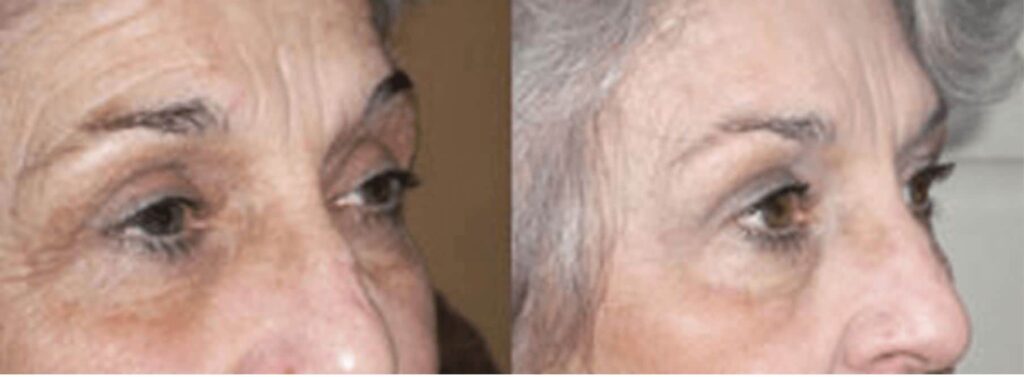
Do you get much pushback from patients or people who are considering working with you, that you’re using stem cells from umbilical cords of babies?
Some people don’t want to use anything that’s not coming from their own body and we absolutely respect that. If that’s the case, then we just don’t do it; we just use the patient’s own stem cells. We like the exosomes because we’re not actually giving you the DNA from somebody else, so there’s no genetic material. It’s just these tiny messenger bubbles that come with some messenger RNA and proteins and things like that, but they don’t have DNA. A lot of people are comfortable with that because they know that the exosome is not an actual cell and it’s not going to become part of you, and it’s not going to give you DNA from someone else. Everyone’s different and we work with whatever is comfortable for each person.
Do you end up having to debunk some myths with folks who are like, “Well, I don’t like stem cell therapy because they’re using aborted babies,” or whatever? Do you have to debunk some myths around this stuff sometimes?
Occasionally, people still don’t understand. It’s understandable that it’s a difficult field and it’s complicated, but embryonic stem cells, which is what you’re talking about, basically getting an embryo that’s only five, six days old and getting the stem cells from that embryo is something very different than what anyone is using in clinical practice right now, (a) because of the ethical issues of having to essentially get the stem cells from this embryo and then when you do that the embryo is not going to live, and (b) that those types of stem cells tend to be more likely to form tumors. Certainly, we don’t want to form tumors in anybody. So, embryonic stem cells are used only in research purposes at this point, not in patients.
Let’s say that a listener is going to have a baby soon and they’ve heard some scuttlebutt about cord banking, cord-blood banking, the actual umbilical cord-tissue banking as well, even placental banking, do you want to share some of your thoughts around that process, and whether you would recommend it or not?
It’s a great question and I have a lot of different thoughts, but I don’t know where I come out of it in the end. I think that we’re pretty close to not necessarily needing for people to bank the umbilical cords of their kids because I think that we’re close to being able to replicate all the different types of cells that are in the umbilical cord, even the blood-forming cells to treat diseases like leukemia, lymphoma, and things like that. Right now, when people are banking umbilical cord, it’s mostly as an insurance policy against some of these blood disorders like the childhood leukemia, lymphoma and things like that where we don’t have light treatments available.
If you have the means and it is not difficult for you to do, then maybe you should bank their cords, but I didn’t bank my cords with my kids. For me, it was kind of a risky gamble, a risk-reward kind of situation and decided not to. At some point, probably in the near future, we won’t have to do that banking of cords. I just don’t know when that’s going to happen exactly.
You mentioned risk-reward. What is a potential risk of cord blood banking?
The only risk is the cost as far as I’m concerned. It’s not inexpensive and I don’t know the actual numbers, but I know it’s thousands of dollars to have the cord blood sent, banked, and kept it in the proper refrigeration, or freezer, or whatever for many years. And you’re paying all the time as you go. Not everyone can afford that. My only concern is I don’t want people to feel guilty if they can’t afford it, that they don’t do it because I think that science is evolving so fast. At some point, we probably won’t need those cords. But if you can afford it, and you feel good about it, then I’m all for it.
I see a risk or a potential downside of doing it in that. If you’re clamping the umbilical cord early in order to get enough blood for banking, you’re depriving the new baby of its rightful blood. Then, you can end up with an anemic baby and all sorts of other medical issues because you’ve deprived the baby of all its blood supply. Supposed to ideally wait until the umbilical cord stops pulsating and is white instead of red. There’s that risk, too, I think.
I’ve never even thought about that but, I guess, it could be.
Let’s say that you have some stem cells banked. I have stem cells banked with U.S. Stem Cell in Florida and now the FDA is considering my own cells as a drug. I wanted to go somewhere overseas to get a procedure done and use my own stem cells. I did have them, not just banked, but they grew more like 10 times more than the original sample size. So, I have enough for 10–20 withdrawals from the bank, but I have to go offshore in order to have a procedure done with those cells. Any places, in particular, that are hotbeds for stem cell procedures like Tijuana, Colombia, Germany?
Great question. I’m actually doing a documentary project right now that’s focused on what the rest of the world is doing with stem cells. Some of which we can’t do here in the United States, The stem cell tourism and how that’s going to affect us, but there’s a couple of different places that are big hotbeds. Certainly, Mexico is an easy place to go. A lot of people go down to Mexico. Panama, it has some fewer restrictions. Dr. Riordan and Panama is doing some amazing things with culture-expanded stem cells of various kinds. Mostly umbilical, but he’s got some great practice down there.
I was just in India a few months ago, and they have some different rules about stem cells and culture expansion there. Even Thailand, the Bahamas, there are quite a few places that are able to do more than the United States is able to do right now in terms of culture expansion, which is that growing of your cells and then re-injecting them, or growing of umbilical cord cells and injecting those.
Everyone's different, and we should work with whatever we find the most comfortable. Share on XIs there a limit to how much culture growth you can have? Is it 10 times, 20 times?
Yeah, there is a limit and they do the number of passes, like how many times that they’re having to change the culture dishes and expand it. I don’t know many passes it is, but at some point, there’s the risk that a mutation is going to develop and you’re going to have mutated cells, if you put them back in. It could obviously cause a mutation or danger to the person. So, they do limit it to a certain number of passes but I don’t know what that number is.
Got it. I know that when I talked to U.S. Stem Cell about how much to culture expand, they gave me the option, the maximum option was 10x.
Okay, there you go.
I don’t know if that’s like the limit or just their limit but opted for the maximum. You mentioned mesenchymal stem cells but they’re also the blood stem cells, I think it’s called hematopoietic or something like that?
Exactly. Hematopoietic stem cells or HSC are the stem cells that are in your body that are the different types of blood cells. They form your red blood cells, your white blood cells, and those kinds of things.
That can be useful if you have those kinds of stem cell banked to deal with a blood-based illness, let’s say leukemia, but then, what people don’t recognize when they bank their newborn’s cord blood, is that if there’s a genetic disease that the baby has, that they exhibit, let’s say three years later it’s leukemia, you can’t use those stem cells because they have the same genetic defect that the child has.
Right. If they were born with it, then it’s obviously going to be in the first cells as well. So, it becomes a problem. I don’t do a whole lot of work with hematopoietic stem cells myself, but it’s a whole different field. With those types of stem cells, you actually do have to have a matched donor and recipient. You can’t just give the cells to any random person, you have to have the donor and recipient be matched, which makes it a lot harder to get those donor cells. That’s what we talked about when bone marrow transplants at general, are these sort of match donor-recipient situations because they’re trying to get hematopoietic stem cells to treat a disease, whether it’s leukemia, or sickle cell, or thalassemia, or some of the other ones.
If you have a sibling who you could use their bone marrow, their stem cells, there’s a possibility that it’s a match but it may not be. So, it’s a one in four chance that a sibling will be a match, so that you can use their stem cells if you had those banked or get them to harvest some of their stem cells.
Exactly. Sometimes they’re a match, sometimes they’re not. That field of regenerative medicine, sort of this, that hematopoietic arm has been around for a long time, and doing these blood transfusions and transplants, bone marrow transplants, has been around. I think there are more than 30-something diseases where they’re treating with bone marrow transplants of these hematopoietic stem cells.
The difficulty with those is that you have to, in general, wipe out the immune system of the recipient before you can give them these bone marrow cells, because otherwise, their immune system will attack the donor cells even if they’re closely matched. It comes with its own risk and that potentially lead to infections and things like that, which is the downside to those kinds of procedures.
Got it. That’s a whole other side of things that you don’t handle, that you’re focused on the mesenchymal stem cells. I’m curious, how often do you get procedures done on yourself?
That’s a great question. People always ask me that. I do have all my own procedures. In general, on myself, I do all my own mostly facial injections and micro-needling. I try to do something even if it’s with just platelet-rich plasma about every three or four months, maybe two or three times a year, I’ll be doing something.
Then, some bigger treatments that are more expensive, like I’ll do exosomes, injections, and micro-needling. I started doing that, but only out about a year and I’ve been doing that at least once a year, I think, as well. I’ve also done stem cells as well, but stem cells had to take a little bit more effort and I can’t do my own liposuctions, so that’s harder. I try to do something even if it’s just micro-needling alone to continue to activate my skin’s collagen production fairly regularly.
That’s awesome. I’m assuming that you’re not taking any pain medication or anything that will dampen your senses. You’re very precise when you’re micro-needling yourself. Is that pretty painful?
Micro-needling is not painful because I use a topical numbing cream that works well. The injections before the micro-needling, they can be painful. I actually have some YouTube videos of me injecting myself, but I’m trying very hard not to act like it hurts. They do, it stings a little bit, but I’ve done it enough that I’ve gotten used to it and I know what it does. I know how long this stinging last, which is not that long, it only hurts for a couple of minutes, and then it’s okay. I think it’s worth it.
Science is evolving so fast. We probably wouldn't need stem cells in the future. But if you can afford it and you feel good about it, then go for it. Share on XYour best clients who are most on top of this and into the biohacking world, how often do they come back?
Probably, once every one to two years. Some people have been returning every couple of years, some as much as every year. It depends on where they live but how hard it is to get here. I think if you can come in every year and a half, two years for the bigger procedures, that’s great – like the skin and the bigger skin procedures, hair procedures, et cetera. But some people, you only need one procedure. If you’re treating pain, like knee pain, you get one procedure, it goes away, and you’re good, you don’t have to come back. A lot of our patients are just there one time and we don’t see them again.
How often does Dr. Harry get the micro-needling from you with the stem cells and PRP?
Not enough because he’s always asking me to do it but we’re so busy that we haven’t done it. He really wants to get a full-body stem cell makeover. Unfortunately, since he’s the one who does a great number of the injections, we haven’t figured out how to get him one yet, but someday that’s what his dream is to get the full body stem cell makeover.
That’s funny. You can’t really do that. I could imagine doing microneedle injections on yourself. Personally, I wouldn’t do that. I can imagine you doing it to yourself but I can’t imagine doing the more invasive injections, like into your knee joints and stuff.
Yeah, and also the back where you can’t even reach. It becomes like you need a second hand and Harry Adelson is such a perfectionist and such an expert at what he does. Eventually, there’ll be somebody else that he trusts to do his injections, but right now, I’ll just wait and see.
When he does the back, how close to the spinal column? That might freak out some of our listeners to think that they’re going to get big needles poked into near their spine, but can you talk a little bit about that? I know this is more of Dr. Harry’s work than yours, but I’m curious.
Yeah. I watch him do it all the time. It depends on what he’s treating and he’s very good at getting a good history from the patient and as well as MRIs, films, and things to see what he’s treating, but some injections are just fairly superficial. The deep muscles in the back or the facets, which are the sides of the bones in the back, and he’ll be injecting around those areas.
Sometimes, he’ll go deeper. He’ll go into an epidural which is in the space that’s not right next to the spinal cord, but close to it, which is if you’re having a baby, you get lumbar, you get an epidural before for pain. That’s the space that they go in for that. Sometimes, he’ll inject the epidural space, which is actually very simple and he does a lot of those. Sometimes, he’ll inject the disc themselves so the discs are you know in between the vertebral bones that are right behind the spinal cord.
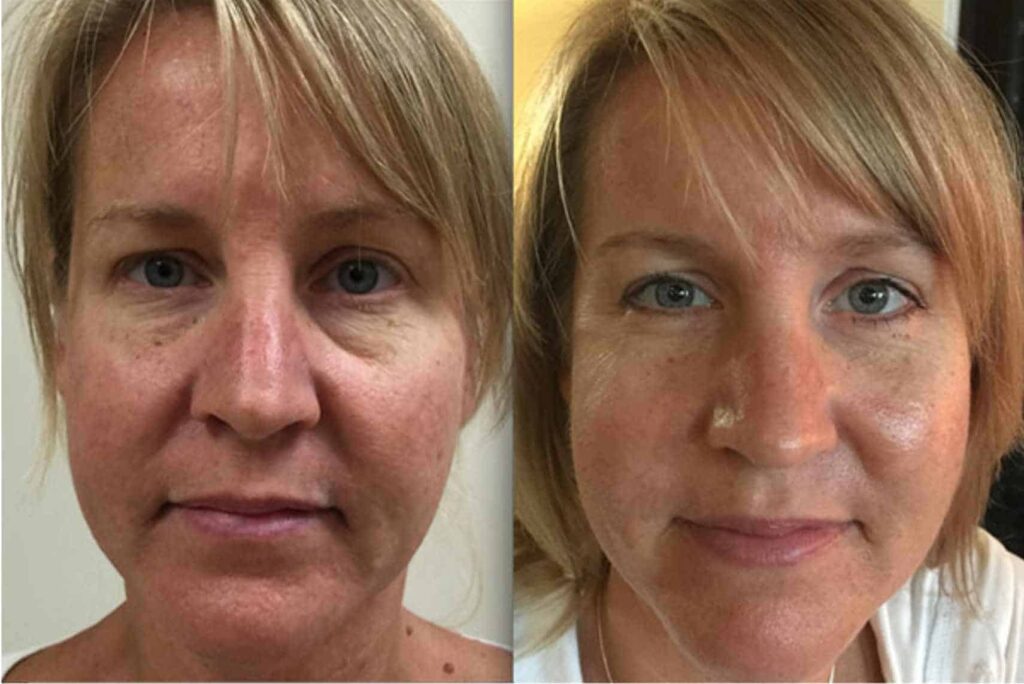
For people who have a degenerative disease, he doesn’t do what they call intrathecal injections. We have a neurosurgeon-colleague friend, Dr. Marcella Madera, who works with us on some cases and she’ll do those, which is essentially going right up next to the spinal cord, into the same area, the same pocket of fluid and you could inject that space in that fluid. Actually, it will go all the way up the spinal cord and could even be at the brain because you’re injecting right into that same space that fills all of that. He can do all different types of injections. Then, we have a neurosurgeon who does the more complicated, dangerous injections, if needed.
Have you done the stem cells injected into your back, joints, and so forth from Dr. Harry?
I have not. I don’t really have a lot of pain. Actually, I just had my shoulder down with PRP and exosomes about three weeks ago, so I had some yoga injuries and actually, it’s starting to feel better already. It was sore for about a week and then it’s slowly starting to get better. But the rest of me, it’s been pretty healthy. I have had some IV injections in the past just because. Luckily, I haven’t had any joint problems other than my shoulder.
I remember hearing from, I don’t remember who now, but somebody who is a stem cell doctor, might have been one of you two, that said its typical practice for a stem cell doc to get stem cells via IV injected every six months or so, at a minimum every year just as a maintenance, because they know how valuable it is to their anti-aging and health maintenance.
Yeah, I have a lot of friends in the stem cell world, and a lot of them will do umbilical cord stem cells or exosomes IV fairly regularly. I think every six months or every year. There’s certainly some research being done right now into looking at using umbilical cord stem cells in the aging population just to treat frailty of aging. Basically, to try to turn back the hands of time in these older people just by doing IV stem cells with younger people’s stem cells. I think that there’s a lot of interesting research being done. We don’t know exactly the best way to do it yet, but I do have a lot of friends who get frequent treatments.
One other area that I want to highlight, that I thought was really innovative and cool is treating your pets who are aging and might have arthritis, or some sort of chronic debilitating pain, and do stem cell therapy on your pet and have a kind of back to the youthful vibrant version of itself.
I remember seeing a video of a dog that couldn’t even walk up the steps. It kept falling down the steps as it was trying to slowly make its way up. I think this was at a Bulletproof Conference. This was shown on the screen by one of the stem cell sessions. Then, the pet had a procedure, stem cells injected. A few weeks later, made its way up the stairs, no problem, slowly, but didn’t fall or anything and definitely looked like it was way better. Then, three or six months later, the dog was running around and chasing sticks and stuff. It was really amazing. It looked like a completely different animal. I’ll put that video. Do you hear much about pets and stem cell therapy?
Some, yes. I was just talking to a guy recently, who is in Sweden and Dubai, and they’re treating horses with stem cells. They’ve treated hundreds of horses, both lame horses as well as these million-dollar racehorses. They’ll do just frequent IV infusions to keep them younger and healthier. Then, of course, if they’re actually having an injury, they’ll treat the injuries. It’s actually a pretty big business that they were talking about using these stem cells in these horses.
I think that certainly, you could use it in pets as well. I’m not sure where you find vets that do it, but I’m sure that there are out there. Definitely, PRP has been used, in that medicine for a long time. I’m sure a number of them are doing stem cells as well now. It’s pretty cool.
It’s amazing. Last question, rheumatoid arthritis. Is that something that somebody who’s suffering from that could use stem cell therapy as a solution or is there another procedure that would be more appropriate for rheumatoid arthritis?
Potentially, yeah. Certainly, if it’s just a couple of joints, then injecting the joints themselves could be helpful. If it’s multiple joints, because that’s typically an autoimmune disorder, that’s IV Infusion, there’s a lot of research looking at IV stem cell and treatments for arthritis and most of that is done outside of the country. Again, we’re not supposed to kind of use IV, we’re not supposed to use IV treatments to treat systemic diseases here. We can’t say we’re using IV stem cells to treat something like that, but I know that Dr. Riordon at the Stem Cell Institute in Panama, does quite a bit of work with autoimmune disorders including multiple sclerosis, rheumatoid arthritis, autism, and all kinds of things. It’s a simple IV Infusion that you have to do multiple of them, generally. It’s not just one and done, but he sees great results in some of these types of patients.
That’s so cool. I should have prefaced this at the beginning, but I will say this now. Listeners, don’t treat this as medical advice, all disclaimers apply. Don’t sue us. We’re not giving you medical advice. You need to talk to your doctor before you do anything. This is all just informational.
Yes, please don’t sue us.
Exactly. All right, well thank you so much, Amy, for joining me on the show and sharing your experience, your wisdom, your depth of expertise in this field. You’ve been fantastic for helping me out with my procedure. Hopefully, you’ll get plenty of calls from listeners who want to work with you for themselves. How would they reach you if they wanted to?
It's not a bad idea to bank your cells, but keep in mind that you can't put those cells back in your body legally right now in the US. Share on XThey can contact me at a doceremedical.com, Docere Medical. That’s one of the easiest way. I’m also on all the different social media platforms, @DrAmyBKillen, and I’m pretty active on those as well.
Awesome. Thank you, Amy, and thank you, listeners. Now, take some action and reverse the clock. We’ll catch you on the next episode of Get Yourself Optimized. This is Stephan Spencer, signing off.
